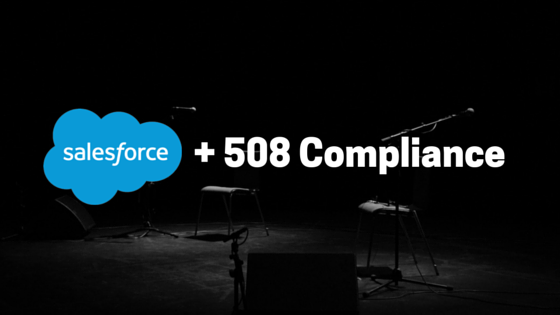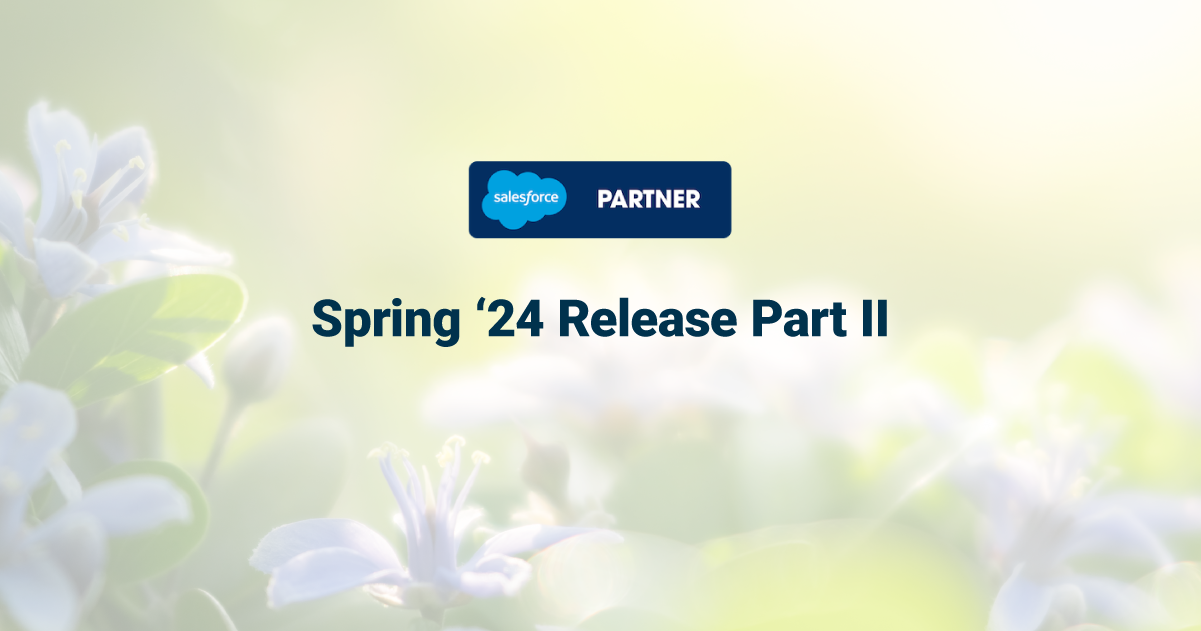Learn About 508 Compliance from a Blind Salesforce Developer
As a blind person myself, I can attest to how important universal design is within my life. You’ve probably heard about universal design in some capacity before – most likely in regards to home design. Universal design in a home allows it to be accessible to all individuals, regardless of disability. So, for example, an element of universal design in the home would be the installation of blinking notification lights to indicate an alert sound such as the smoke detector or doorbell, or home automation devices that can be activated by voice. However, universal design extends to all parts of life – and that includes computer use. This is where my job as a Salesforce developer for Galvin Technologies comes in.
 Here at Galvin, we help businesses implement the Salesforce Platform and provide consultation services for the applications used within that platform. As of the writing of this blog Salesforce is the 4th largest software company in the world and their commitment to 508 compliance is remarkable. Essentially, Salesforce ensures that companies are provided software applications that are accessible and user-friendly for everyone. And to ensure true universal design in its applications, Salesforce makes use of technology that is 508 compliant.
Here at Galvin, we help businesses implement the Salesforce Platform and provide consultation services for the applications used within that platform. As of the writing of this blog Salesforce is the 4th largest software company in the world and their commitment to 508 compliance is remarkable. Essentially, Salesforce ensures that companies are provided software applications that are accessible and user-friendly for everyone. And to ensure true universal design in its applications, Salesforce makes use of technology that is 508 compliant.
What is 508 Compliance?
Good question! Being 508 compliant means that all users, regardless of their disability, can access your website or application. Compliance standards were established to help remove barriers and provide new opportunities to everyone that uses the Internet. They can be found in Section 508 of the Rehabilitation Act of 1973. Websites that belong to federal agencies and institutions that receive funding from the federal government are required by law to be 508 compliant. These agencies and institutions include government agencies, grade K-12 public schools, public higher education institutions and federally-funded nonprofit organizations.
Becoming 508 compliant is a whole different matter. Sometimes only minor tweaks are necessary to make huge accessibility improvements, whereas other times you may need to engage in a large-scale overhaul of your website or application. For example, providing sufficient contrast between your website’s foreground elements and background elements may seem like a minor detail, but it can be a huge improvement for users that are color blind or have difficulty seeing. Of course, this won’t help blind users like myself. To make your website accessible to the blind, you’ll need to make your site compatible with assistive technologies, such as screen readers that either audibly read the text on the site or translate the text into braille.
Salesforce is committed to following the internationally recognized best practices outlined in Section 508 of the Rehabilitation Act as well as the Web Content Accessibility Guidelines 2.0 Level AA. They have partnered up with the U.S. General Services Administration and the Information Technology Industry Council in order to create a standardized form that documents the conformance of a product to Section
508’s regulations. This form is called the VPAT, or the Voluntary Product Accessibility Template. Salesforce 508 compliance is judged by a third party vendor using VPATS to assess the accessibility of Salesforce’s core CRM products.
Yes, I’m a Blind Salesforce Developer?
I am Adam Rodenbeck (@arodenbeck) – and as I stated previously, I am a Salesforce developer for Galvin Technologies. Allow me to tell you a little bit about myself. I develop Apex code as well as Visualforce pages for Galvin using screen reading software that translates website text into both audible speech, and braille. While this certainly makes it much simpler to read through documents and basic web applications, websites and software that follow accessible web standards make life much easier.
My career as a software developer began quite modestly, teaching people how to use computers and assistive technology at a vision rehabilitation center. Assistive technologies, such as the screen reader I use, allow individuals with limited or no vision to access electronic content independently and seamlessly. As part of my job, I also worked with local employers in providing feedback on how accessible their websites were, which eventually led to a role in the IT department. There I was tasked with ensuring that our internal computer systems were accessible to everyone. It was here that I began expanding my knowledge of the Salesforce platform. During a routine Salesforce upgrade, one of our assessment tools broke. I began doing research to fix the issue. During my research, I not only learned how to fix the problem, I also figured out how to make small changes to improve our Salesforce environment. That project gave me the drive, and Salesforce provided the knowledge, which led to a promotion as the lead Salesforce developer.
I recently took a trip to San Francisco to attend a presentation on accessibility that was hosted by the Bay Area Salesforce Developer User Group. Jesse Hausler (@jessehausler), principal accessibility specialist for Salesforce, and Shannon Hale (@shannonsans), director of user experience at Skuid, provided an outstanding presentation. They presented examples of what was and what was not accessible and provided tips on how to create an accessible user interface. The impressive turnout made me realize how many people care about making their applications accessible to all users, whether disabled or not. I cannot stress enough what kind of difference this could make to a person using assistive technology.
In closing, the Salesforce community is amazing and I could not have grown my career without it. But the dedication that Salesforce has to 508 compliance has truly been remarkable in providing me the platform that I need to not only be successful but develop world class solutions for our clients.












